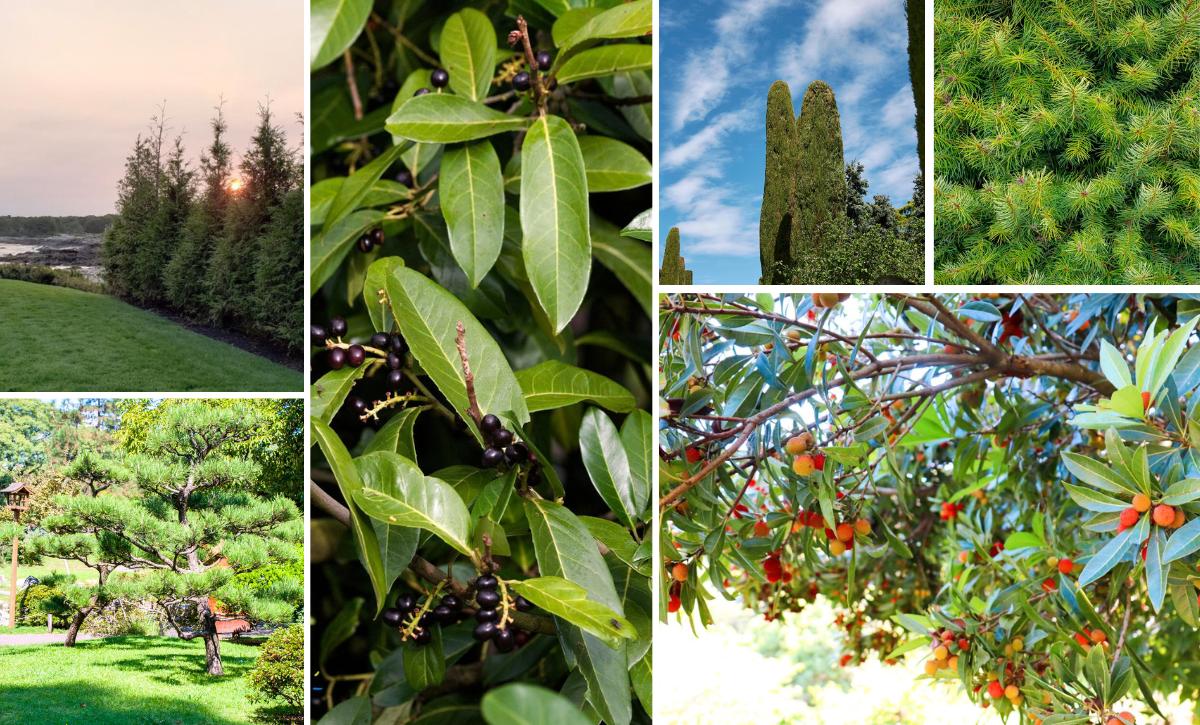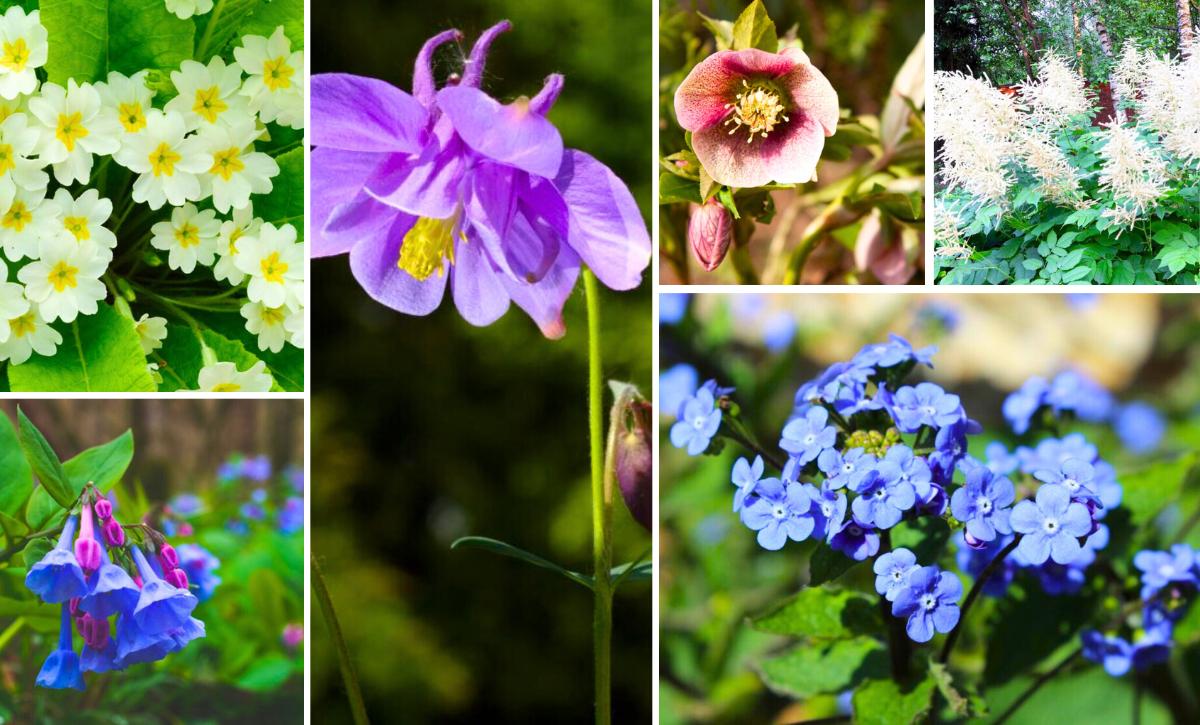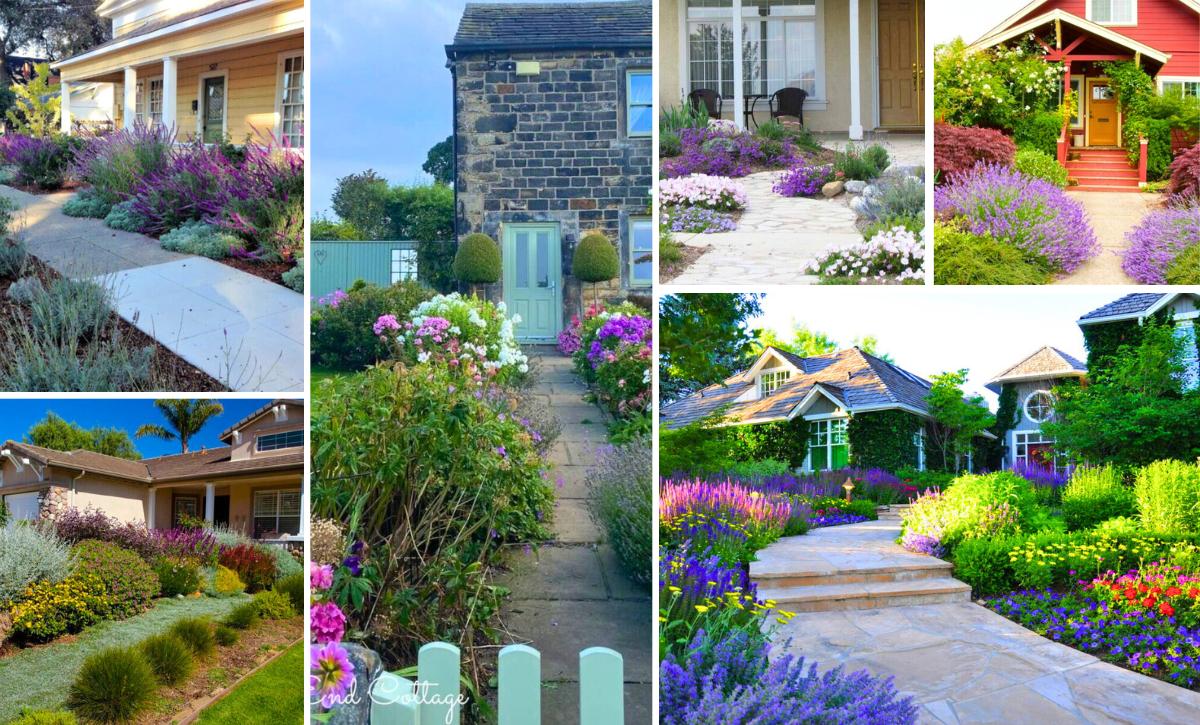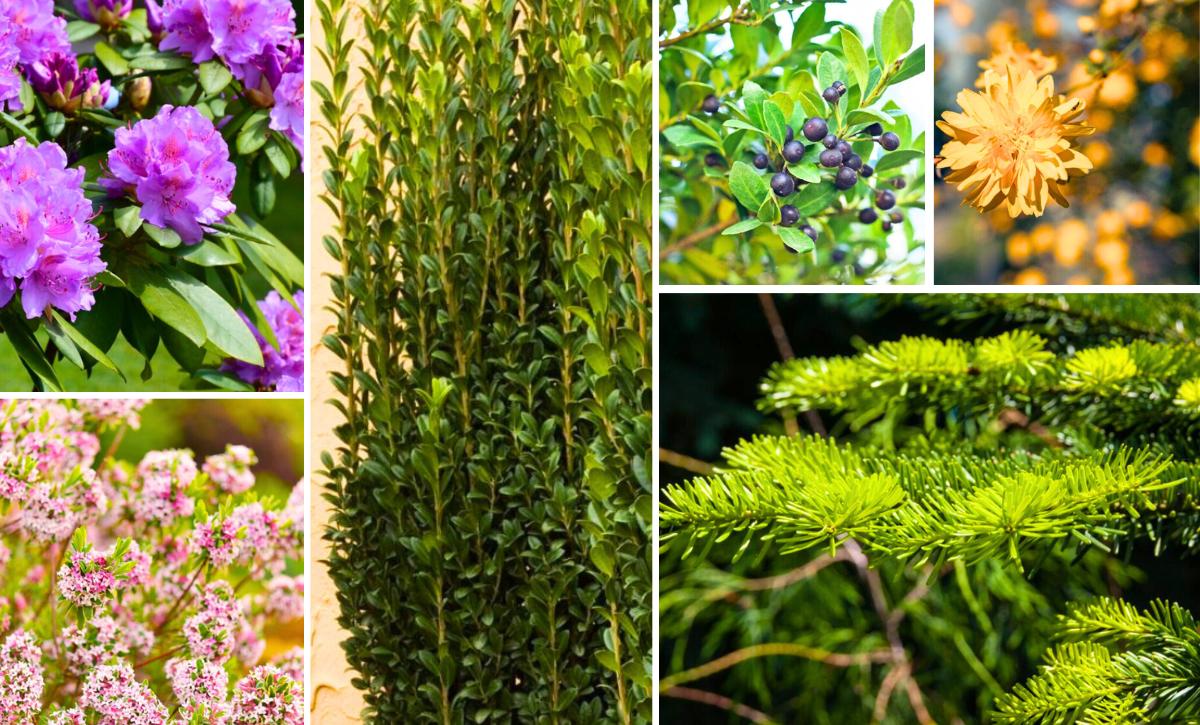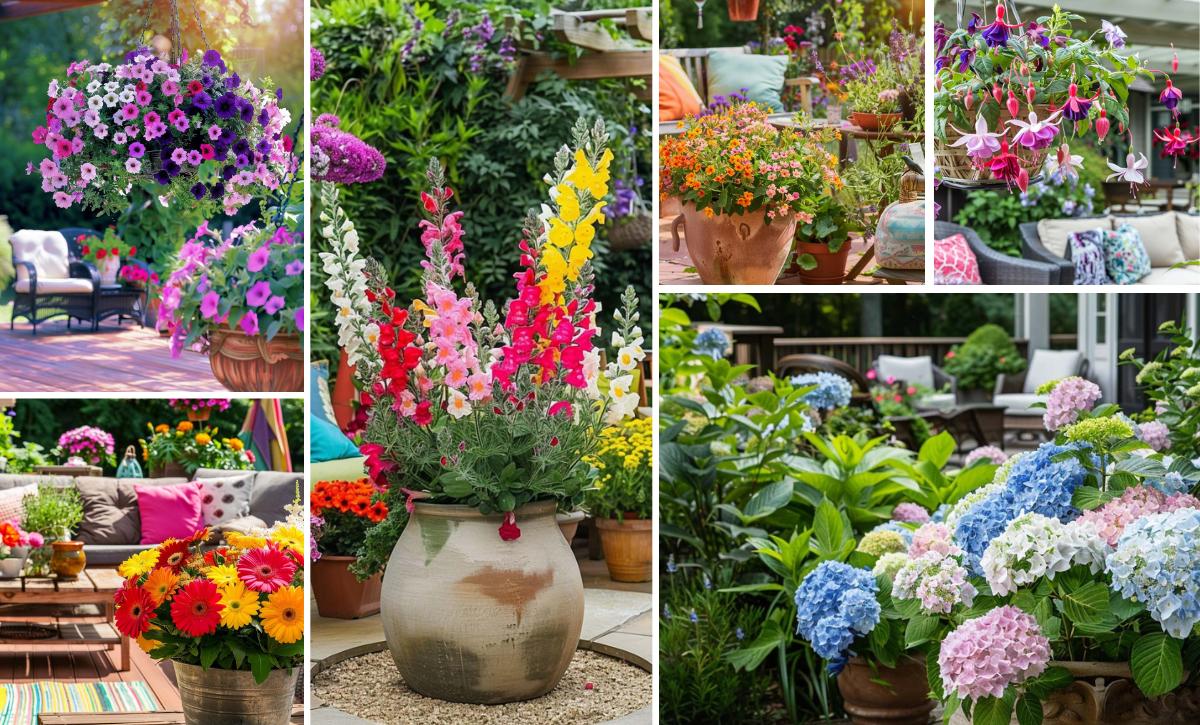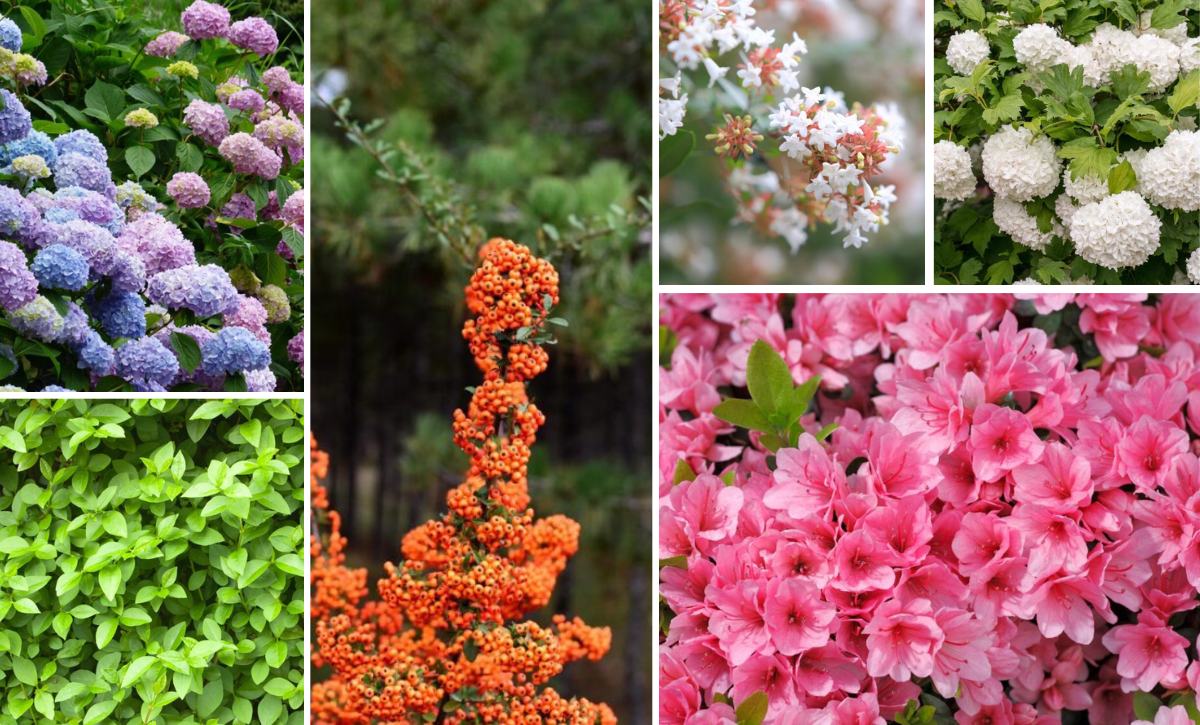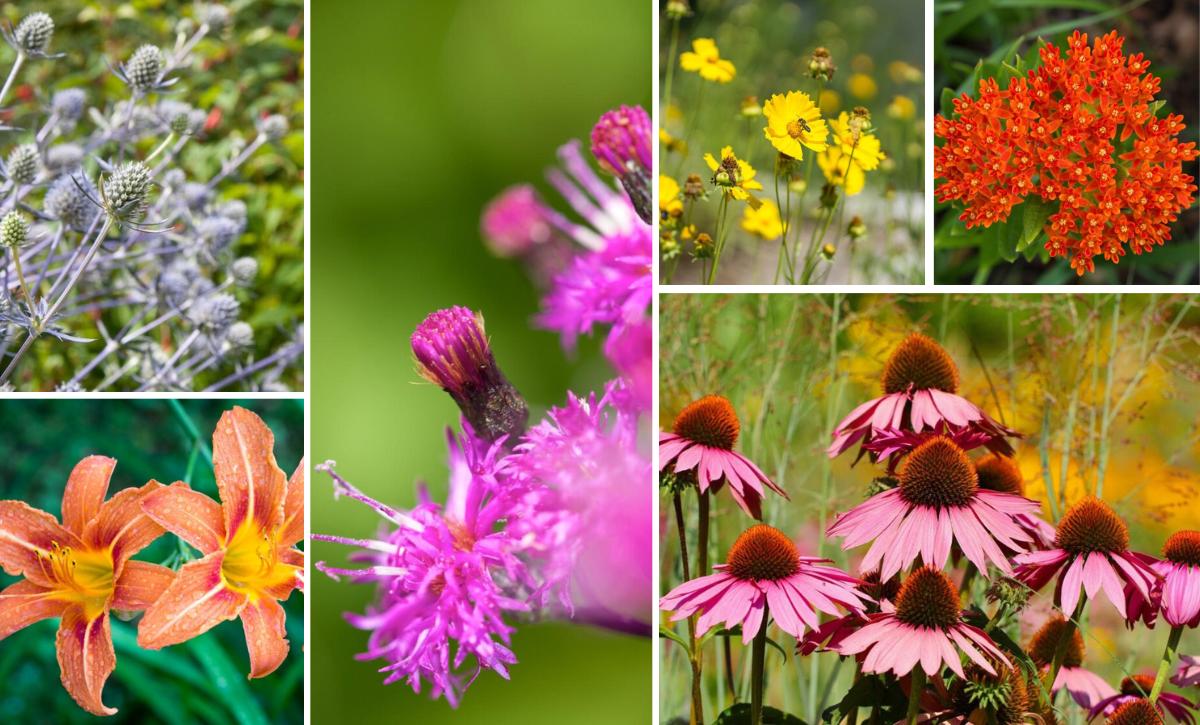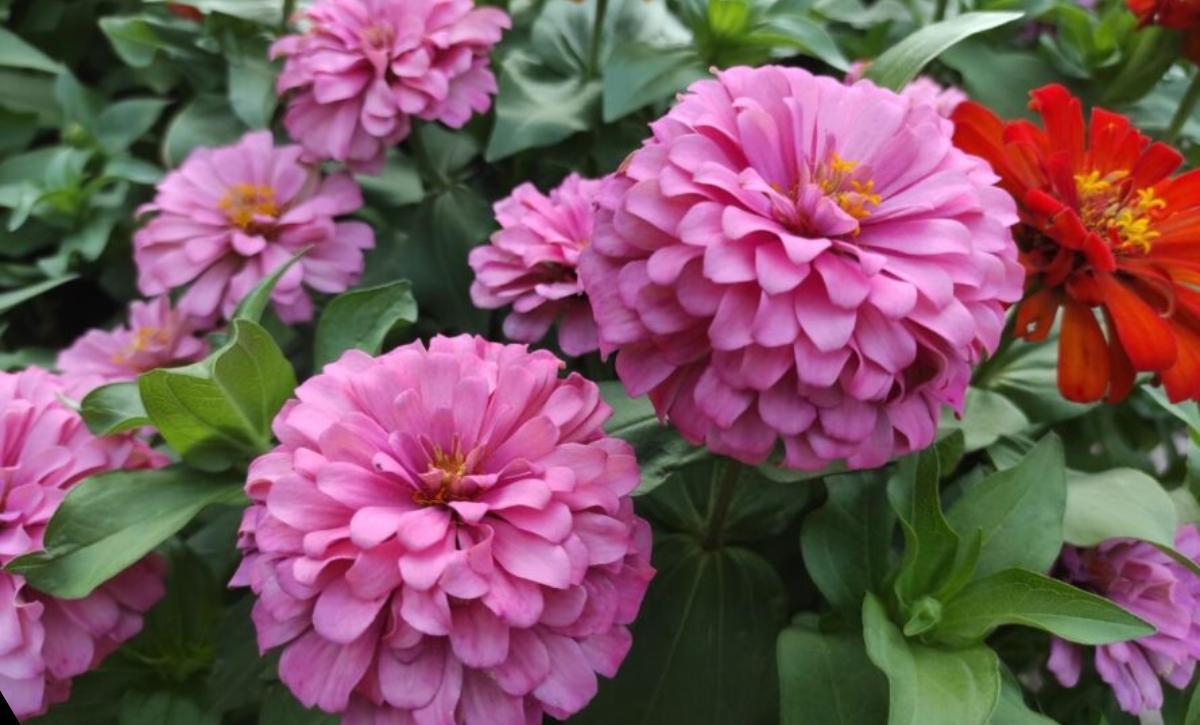Today, we will discuss a plant ideal for growing in Florida; it’s a bit odd, right?
Florida is known for its extreme weather conditions, and growing plants there sometimes can be a nightmare.
The Evolvulus glomeratus, commonly known as Blue Daze, is a perennial plant that blooms continuously throughout the year. The plant produces colorful blue flowers and has silvery-green leaves that provide the perfect backdrop.

Most gardeners grow this beautiful and hardy plant for ornamental purposes, and others use it as ground cover in sunny areas of their yards!
Let’s take a nature stroll and learn about the Blue Daze Florida!
The Blue Daze Florida
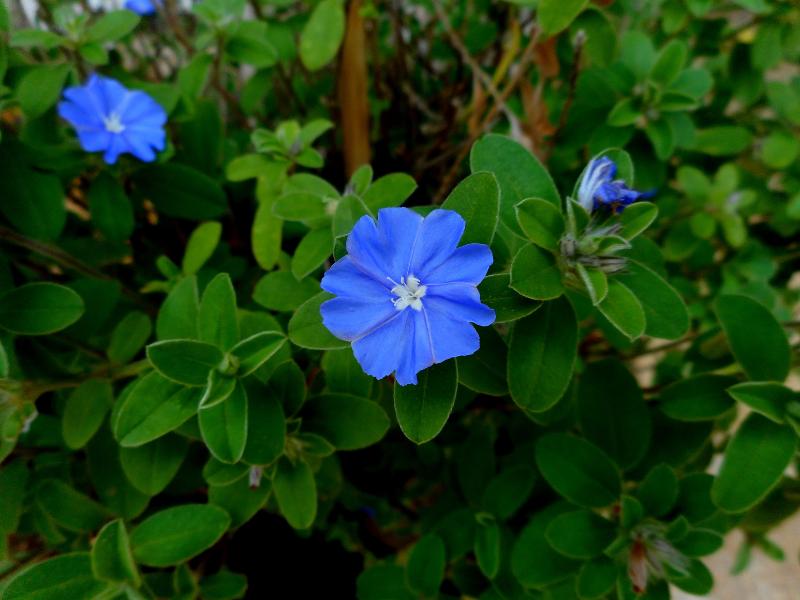
Let’s first look at the general information about this plant:
| Scientific name: | Evolvulus glomeratus |
| Pronunciation: | ee-VOLV-yoo-lus glom-mur-RAY-tus |
| Origin: | Native to Paraguay and Brazil |
| Common names: | Blue Daze, Texas superstar |
| Family: | Convolvulaceae |
| Plant type: | Herbaceous, perennial, annual |
| USDA hardiness zones: | 9 – 11 |
| Planting month for zone 9: | April – September |
| Planting month for zones 10 and 11: | February – December |
| Availability: | Primarily available in most areas within its hardiness range |
| Uses: | Cascading down the wall, hanging basket, naturalizing, container or above-ground planter, edging, border, mass planting |
If there’s ever a perfect plant to grow in Florida, it’s definitely the Blue Daze. This plant that grows naturally in Brazil and Paraguay thrives in USDA hardiness zones 8 – 11.
A member of the Morning Glory family, the Blue Daze produces funnel-shaped flowers with the most remarkable sky blue color. Plants in this family are collectively called Convolvulaceae, and they share the specific characteristic of having downy leaves.
The Blue Daze is a dense plant that can grow to a height of 1 foot and spread between 1 – 2 feet.
Even though the Blue Daze is a fast-growing plant, it’s not considered invasive. It’s a low-maintenance plant that you can easily propagate by seeds or stem cuttings.
The plant is also low-growing and drought-tolerant, making it ideal to use as ground cover, and the plant’s beautiful blue flowers form a sea-like view when on the ground. The plant prefers exposure to full sun but can also flourish in partial shade. However, the plant may not produce these magnificent sky-blue flowers if you constantly keep it in the shade.
The Blue Daze grows annually in North Florida since the winter season there is relatively cold, but it’s a perennial in Central Florida and South Florida. Ensure you confirm the USDA zones for the plant to grow in the preferred range.
The Blue Daze doesn’t adorn Florida gardens alone but is also quite popular in Texas. There’s even a nickname for it: Texas Superstar!
The plant’s leaves are generally oval and can grow about 2 inches long. The leaves are green with a silvery shine, providing the perfect background for the splendid sky-blue flowers.
Another fascinating thing about the Blue Daze is that its blue flowers are short-lived. You will find them blooming early in the morning, and by the end of the day, they’ll be dead.
These evergreen plants will undoubtedly make for excellent border plants and create alluring ground covers. Still, they’ll look amazing as a spiller in mixed containers or planted in hanging baskets.
These hardy plants also flourish in coastal gardens due to their salty conditions and tolerance.
Planting the Blue Daze
Spring is the best time to plant the Blue Daze since the roots will have ample time to establish once summer arrives. The well-established roots become drought-tolerant during summer and survive low watering and hot temperatures.
You’ll need to prepare the soil before you start planting. You can accomplish this by using a hoe, spade, or power tiller that’ll break the current soil in the garden. Also, loosen the soil by adding peat moss and organic matter like manure or compost.
These components will improve drainage and add to the soil’s nutrient content, but also introduce earthworms and microorganisms that’ll keep the soil healthy!
Add a balanced all-purpose fertilizer like the 14 14 14 or a granular starting fertilizer at the beginning of your plants’ growing stage to give them a boost.
Here’s a guide to help you plant the Blue Daze:
• Begin by inspecting the plant label for suggested spacing.
Crowding plants, as they struggle for light, can cause weaker growth and fewer blooms. There are a few scenarios whereby this rule may not apply, such as shade plants that take a long time to grow and fill in, areas with a short growing season, or circumstances where covering a space with color is necessary, maybe for a special occasion in your garden.
• Remove the plant from its growing medium.
While tapping the container, gently squeeze the outside to help the plant come out. Keep applying pressure to the outside of the container if the plant doesn’t come loose, and cautiously hold the plant’s base while pulling until the plant comes out.
Ensure you don’t crush or damage the stem while performing this step. If you’re using a pot to grow your plant, support the pot’s base, tip it to one side, and tap the outside of the container to make it loose. Continue tapping the container while rotating it to break up the soil, and you should easily remove the plant from its pot.
• Excavate a hole that is twice the size of the root ball.
Digging deep enough is also crucial to keep your plant at the same level in the ground as in the pot. Gently rake the roots apart using your finger while holding the plant at the top of the root ball. Next, gently place the plant in the hole.
• Tamp down the soil around the root ball to fill in any empty spaces.
You should make sure the soil surrounding the planting hole is at the same level as the soil around it or at least one inch above the top of the root ball. Water your new plantings daily for a few weeks to ensure they have a strong foundation.
• Introduce a trellis, fence, or wall.
Since the Blue Daze is a vining annual, it would be best to provide a structure for it to grow and spread vigorously.
Now, let’s look at some Blue Daze varieties that most gardeners use in their landscape designs.
Common Blue Daze Varieties
There are numerous Blue Daze varieties (at least 100 Evolvulus species), but we’ll focus on popular types you can use to adorn your garden.
Dwarf Morning Glory
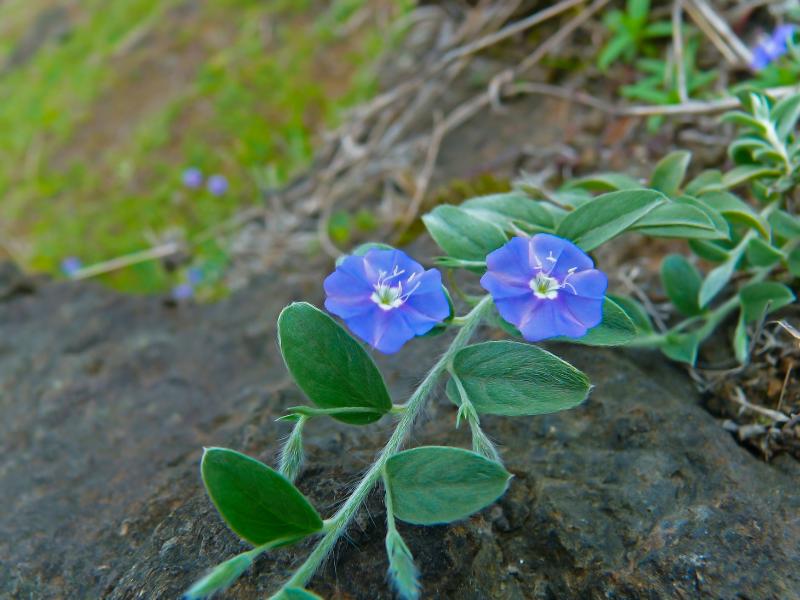
Also known as Evolvulus alsinoides, the dwarf morning glory is your typical Blue Daze plant — it grows as a perennial or annual plant depending on the region and produces blue to lavender flowers.
This hardy plant can tolerate most unfavorable conditions, such as total sun exposure and high salinity concentration in the soil. Nonetheless, the plant can’t tolerate poor air circulation and wet soil.
Blue Daze varieties usually look similar, making it challenging sometimes to differentiate between them. However, the good news is that having similar features means they have similar care requirements, making their growth and maintenance much more straightforward!
If you intend to beautify your garden with the Blue Daze, ensure you take a look at our plant care guide below.
Hawaiian Blue Eyes
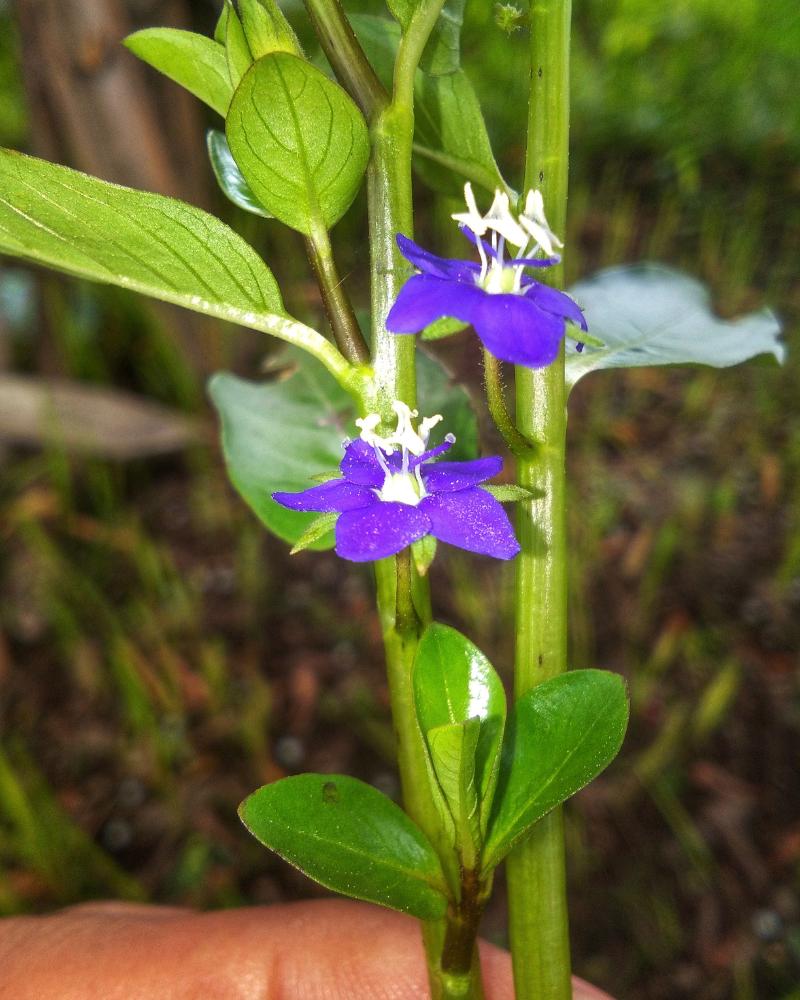
Also known as Evolvulus glomeratus, the Hawaiian Blue eyes is an annual plant that can bloom for the entire growing season. This low-maintenance plant produces blue flowers similar to other Blue Daze species.
Below is some general information regarding this plant:
| Category: | Annual |
| Bloom time: | Summer |
| Available colors: | Blue |
| Space range: | 30 – 38 cm (12 – 15 inches) |
| Height range: | 20 – 25 cm (8 – 10 inches) |
| Plant light: | Sun to partial shade |
| Lowest temperature: | -1 – 4℃ (30 – 40℉) |
| Companion plants: | Candytuft, Echinacea, Yarrow |
| USDA zone: | 10 – 11 |
You can easily find any of these varieties at your local garden store or search for them online, and I’m pretty sure you’ll find one.
Taking Care of The Blue Daze
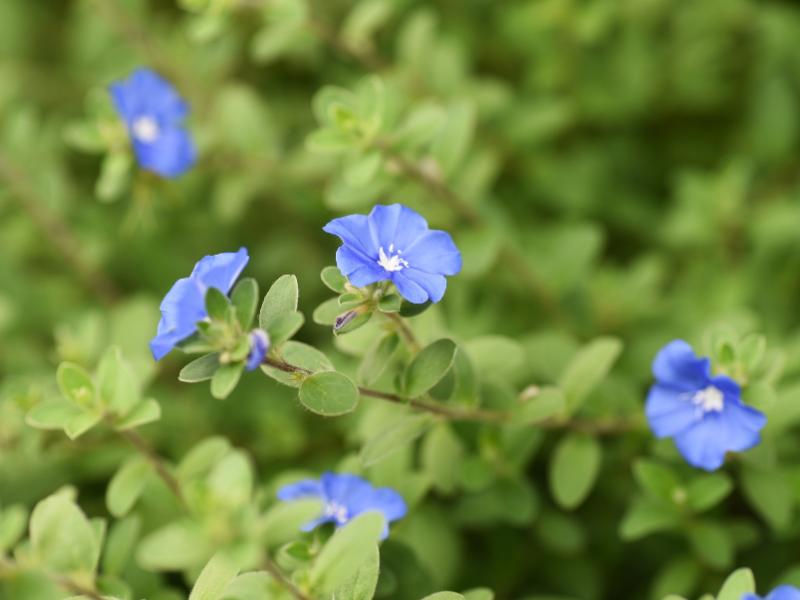
As already mentioned, taking care of a Blue Daze is pretty straightforward. This drought-tolerant plant can survive for long periods without water, so skipping a few watering sessions won’t do much harm.
You only need to ensure your plant receives enough sunlight throughout the day and provide it with the appropriate soil type.
This plant is self-cleaning, so there’s no need to worry about deadheading it. However, deadheading and pruning are ideal for encouraging foliage growth and new blooms.
Here are the basic requirements required for your Blue Daze plant to thrive.
Light Requirements
We have repeated this several times already, but you should always remember that Blue Daze plants completely adore total sun exposure!
You need to provide these plants with at least 6 – 8 hours of direct sunlight throughout the day, which is one of the main reasons you can plant them in a hot spot in your garden where most plants wouldn’t survive or use them as ground cover.
Another exciting thing about these plants is that they can grow in partial shade, so there’s no issue if your sunny spot receives a bit of shade.
These plants will produce fewer flowers or none at all if you don’t provide the appropriate light conditions.
Ensure you put your plants near a window if you plan on growing them indoors for ornamental purposes so they can get direct sun exposure during the day; they’ll be a great addition to your indoor plant collection!
Temperature and Humidity Requirements
It’s crucial to keep the temperatures above 60℉ for your Blue Daze plant to reach its full potential. However, some Blue Daze species can survive temperatures as low as 30℉.
Growers living in regions with cold weather usually add mulch around the plant’s base to help with water retention and keep it warm.
These plants can flourish in salty conditions and coastal gardens, making them ideal to grow near the ocean. They can also adapt to various humidity levels, so humidity won’t be an issue at all!
Water Requirements
You’ll have to put in a little bit of effort if you are growing new baby Blue Daze plants. You’ll have to water the new plantings daily for several weeks, but you can leave them without water for longer once they’re established.
Usually, it would help if you water these plants once or twice a week, although this will be determined by the variety (look for more info on the plant label) and where you place the plant in the garden.
For example, if you place your Blue Daze in a sunny spot in your garden where it receives at least 8 hours of sunlight during the day, the soil will dry out quickly, hence requiring more water.
Consequently, if you place your plant in partial shade, you’ll water it less frequently.
You should also note that clay soils have much better water retention than sandy soils, so you’ll have to water your plants more often if you grow them in sandy soils.
We recommend applying water to the root zone around the plant’s base when watering and avoid soaking the plant. You can buy a soaker hose to minimize water loss through evaporation and maintain the health of your plants.
Hand-watering with a watering can with a sprinkler head attached is an excellent technique for managing irrigation. It would be best to water in the morning, especially if you have a huge garden and you’re using a sprinkler, to allow the leaves to have enough time to dry during the day.
Wet leaves attract pests, mold, and other fungi, which can destroy your plant, so avoid them at all costs.
Soil Requirements
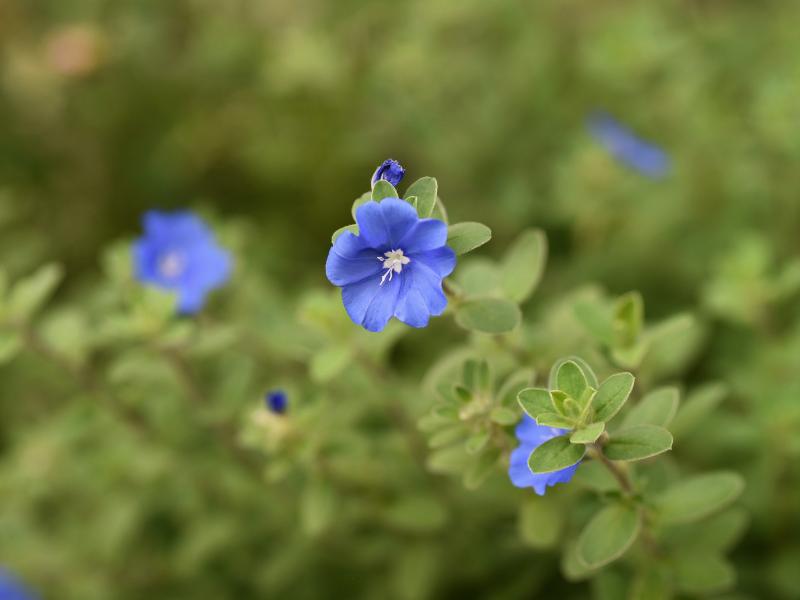
Blue Daze thrives in sandy and well-draining soil. This plant can grow ideally in poor soil, so nutrient content is not very crucial. However, air circulation and moisture retention are vital for growth and development.
Alternatively, you can use loose potting soil, but it has to be well-draining.
It would be best to consider the pH level when choosing soil for your Blue Daze plant. This plant flourishes in acidic soil but can tolerate neutral pH levels.
Avoid overwatering your Blue Daze plant to prevent it from wilting and dying due to fungal infections caused by soggy soil. Ensure the pot you’re growing your Blue Daze plant in has drainage holes at the bottom to prevent this.
Fertilizer Requirements
You’ll need to provide your Blue Daze with some plant food to produce all those beautiful sky-blue flowers.
Thus, you should apply fertilizer at least once monthly to encourage the growth and development of silvery green leaves and true blue flowers.
Blue Daze plants aren’t picky when it comes to fertilizer type; you can use synthetic, organic, liquid, slow-release, or granular fertilizer. It’s all up to you to choose!
You should apply liquid fertilizers weekly, while granular fertilizers should be used monthly. Apply slow-release fertilizers during the beginning of the season for them to continuously release nutrients in the soil.
Search for the best formula to boost flower production; an ideal fertilizer should contain Phosphorus, Potassium, and Nitrogen.
Avoid overfertilizing your Blue Daze since it can lead to chemical build-up in the soil. Overfertilization can also cause severe damage to your plant, so you should be very careful.
Pruning
You have complete control over how you prune your Blue Daze plant. You must keep on pruning your plant to maintain the shape you want and make it look nice and clean.
Pruning isn’t necessary if you are growing this plant in a hanging basket; you only need to remove any dead flowers.
However, you’ll have to prune an outdoor Blue Daze plant once it grows rapidly.
Also, prune your plant if it has stopped growing or looks leggy. Pruning encourages seed production and new growth.
Don’t throw away the seeds if you plan on propagating this plant!
Propagation
You can use two methods to propagate the Blue Daze plant — by growing it from stem cuttings or by sowing the seeds produced from a previous plant.
When propagating with stem cuttings, sever a 4-inch piece of a healthy stem from the mother plant. Plant this cutting in a lightweight potting mixture like sand or coarse.
Transplant your new plant outdoors once the temperature is warm enough, and place it in a sunny spot!
For propagating with seeds, sow them indoors in sandy soil before the last frost date, and ensure you place your new plants in a subtle and warm place where they’ll receive plenty of sunlight!
Common Issues
Fortunately, Blue Daze plants aren’t susceptible to many diseases and pests. The main problem they are prone to is Pythium fungus caused by overwatering.
Pythium is a soil-borne organism that prefers high soil moisture. Infected tools, water, soil, and other implements can all transmit spores.
A plant’s roots turn black and slowly decay once they come into direct contact with this fungus spores. The infection gradually spreads to the entire plant, destroying it.
You can apply fungicides such as neem oil or copper fungicide to prevent the spread of this dangerous fungus or throw away your plant.
Commonly Asked Questions
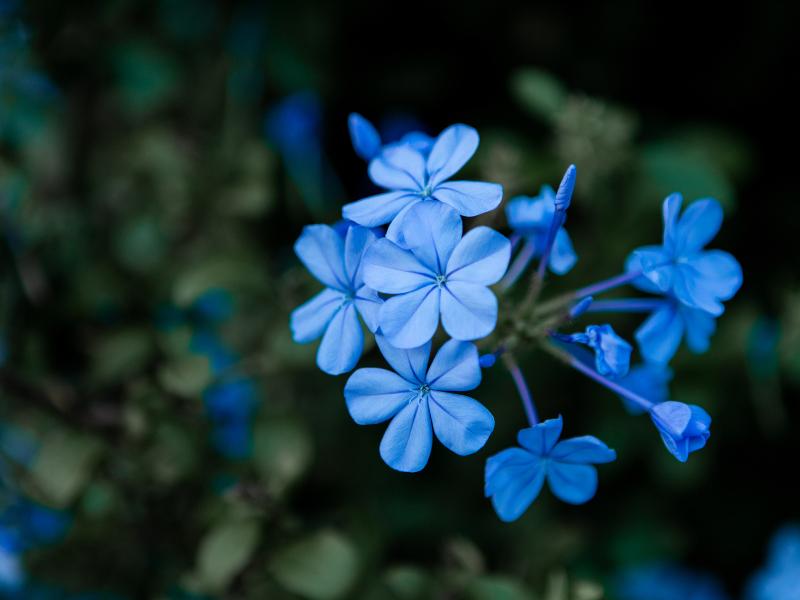
1. Does the Blue Daze Grow in Florida?
Yes, the Blue Daze is ideal for growing in Florida gardens. The plant can adapt to various conditions, particularly the hot Florida sunshine!
As a matter of fact, these plants love direct sunlight and produce many flowers when they get at least 6 hours of direct sunlight throughout the day.
2. Is the Blue Daze a flowering plant?
Flowers are everything for the Blue Daze! The plant produces many sky-blue flowers, contrasting perfectly with the green leaves in the background.
The Blue Daze is a fast-growing plant and produces flowers all summer.
However, flowers might be limited if you grow the plant in a shady area.
One fascinating thing about this plant is that it produces flowers early in the morning, and they are dead by the late afternoon! However, don’t worry. The flowers will re-emerge once again the following day!
3. What are the Blue Daze’s characteristics?
The Blue Daze is an evergreen plant that produces beautiful sky-blue flowers with a funnel shape. These flowers contrast with the silvery green leaves to create a pleasant-looking background. The Blue Daze is a dense plant that can grow 0.5 – 1 foot in height and spread 1 – 2 feet wide.
The Blue Daze is frequently used as a ground cover since it’s a low-growing, drought-tolerant plant with stunning blue flowers.
Even though it may tolerate a bit of shade, it thrives in full sun. The production of its spectacular sky-blue flowers may be reduced if you constantly keep the plant in the shade.
4. Is the Blue Daze a perennial or an annual?
Generally, the Blue Daze is a perennial plant. However, these plants can grow annually in regions with significantly lower temperatures, e.g., North Florida.
These plants are perennial in regions such as Central or South Florida.
Final Remarks
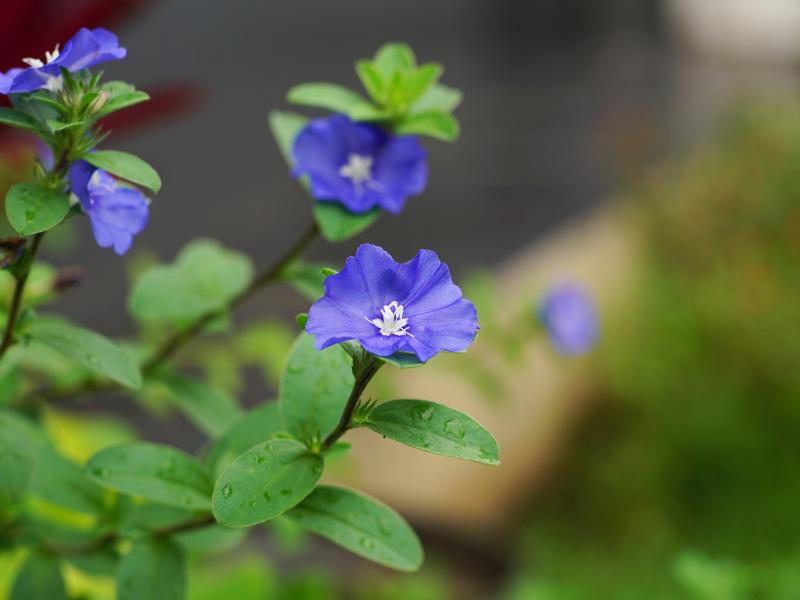
The Blue Daze Florida plant is honestly a work of art and exemplifies Mother Nature’s magnificence! The plant produces one of the most beautiful flowers, grows vigorously, and has almost no requirements.
You won’t find many plants that can survive the harsh Florida weather and still flourish simultaneously, but you can bet on the Blue Daze doing relatively well in such a region.
The Blue Daze is a hardy plant that tolerates many unfavorable conditions, such as flu sun exposure and high salinity concentration in the soil. However, the plant can’t thrive with poor air circulation and wet soil, so you must provide it with well-draining and loose soil.
This plant is usually used in coastal garden decorations since it can tolerate salty conditions.
Having the sky-blue flowers of the Blue Daze in your garden brings a sense of serenity, and they also make your plant a focal point with their beautiful blue color.
I hope what we’ve discussed will prove helpful once you begin your Blue Daze Florida plant-growing journey!
Until next time, bye!

